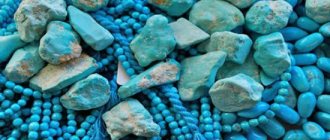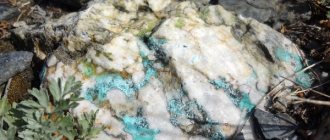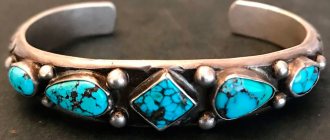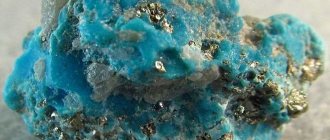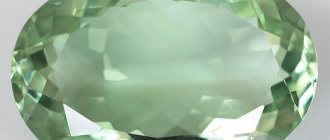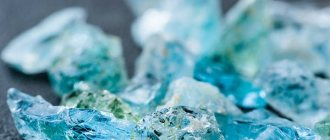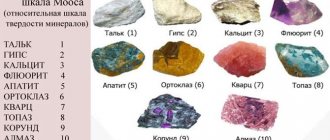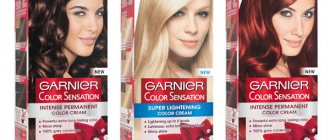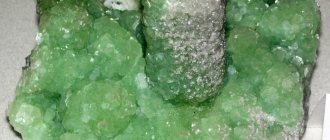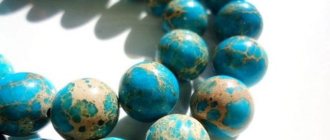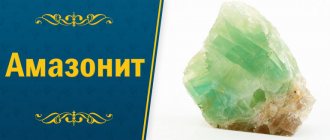In jewelry, the most valuable stones and minerals are those of high quality and natural origin. Additional processing or the use of synthetic artificially grown minerals reduces the value of the products. But, given the ever-increasing market needs for materials and raw materials, jewelers are forced to pay attention to artificial types of stones.
Pressed turquoise as a response to increased market demand
Turquoise has been a mineral beloved by all peoples since ancient times. For many centuries it has remained in demand and popular, and therefore, despite the fact that this rock is not considered rare, today natural high-quality stones are not often found on the market. Time passes, existing mines are depleted, and the development of new ones is carried out inactively - it is not always economically profitable, since it is typical for gemstones to occur in small quantities.
And, nevertheless, the needs of the market must be satisfied, and therefore jewelers resort to various tricks. One such trick is pressed turquoise. Let us immediately note that the answer to the question of whether it is natural will be positive, but this is a natural stone of the lowest quality existing on the market.
How to spot a fake
If you are thinking about buying products made from azure stone, be careful not to fall for the tricks of scammers and not waste money on a fake. There are tricks that will help you avoid mistakes when buying jewelry.
How to distinguish a real mineral from cheap copies:
- A crude fake can be easily distinguished from a real copy, since its surface is covered with low-quality dye. To perform the test, take a cloth and apply alcohol to it. Use a napkin to thoroughly wipe the pebble. If there are traces of paint on it, this means that this is a poorly made fake.
- Heat a regular sewing needle. Touch its tip to the surface of the stone. If an uncharacteristic chemical odor appears, this indicates that the copy is made of polymers. If the product contains sealing mixtures, then a sticky drop will appear at the puncture site.
- Examine the stone under a magnifying glass. Cracks and bubbles are signs of synthetic counterfeits.
- Turquoise tends to become electrified when rubbed against woolen fabric. After mechanical action, dust particles and hairs will adhere to the sample.
- Avoid buying jewelry with a large insert, since massive specimens of the stone are not found in nature. Also, large inserts are not made from compressed mass.
- A natural gem has a subtle waxy sheen, while a fake one attracts attention with a pronounced glossy sheen.
- Try scratching the sample with a needle or sharp knife. A thin scratch will remain on the original specimen, since the gem has an average hardness. If the stone cannot be damaged, this indicates that it is a copy made of quartz or chalcedony.
Important! At home, it will not be possible to distinguish pressed turquoise from the one that was mined in nature. To avoid spending money on a copy, pay attention to the reputation of the jewelry store where you purchase jewelry.
Ask the seller to present a document proving the authenticity of the gem. Beware of purchasing products with stones from unauthorized retail outlets. Only an expert gemologist can give an accurate assessment of the origin of a mineral.
What is it - pressed turquoise
- The best stones are called natural, they are characterized by good hardness and can be inserted into jewelry without any preliminary chemical manipulation. Natural minerals are subjected only to mechanical processing - cutting, polishing, etc.
- In second place in quality is fortified turquoise. In this case, the intervention of the jeweler, in addition to mechanical manipulations, consists of strengthening the hardness of the stone with various natural and artificial chemical cements - polystyrene, resins, paraffin, fat, evaporated quartz, etc. By the way, when processed with evaporated quartz, the stones are completely indistinguishable from natural ones, and even special gemological tests cannot reveal the differences.
- The third, still honored place, is occupied by ennobled turquoise. Here, processing with dyes is added to the treatment with cements. In this case, the source material is minerals with a dull color or unclear structure, and therefore they need to be artificially tinted to make them more attractive. Jewelry with ennobled gemstones is easy to distinguish from natural ones - the former are distinguished by deliberate ideality - too glossy, too polished and unnaturally bright.
- And finally, the pressed turquoise we are considering are stones of the lowest standard. How are they made? Using a press from powder or waste from processing minerals of higher quality. Many people call such products imitation, but this is not true. Yes, we are not talking about a whole stone here, but about particles of many stones, but, one way or another, these particles represent nothing more than real turquoise. So the question of how a pressed stone differs from a real one is not correct.
Types of non-original gems
It is difficult for the average person to find the differences between a real gem and a fake, since the latter have the same external characteristics.
Glass samples and cheap fakes
Glass and plastic are cheap materials that, after proper processing, look like turquoise stones. A glass or plastic fake has an unnaturally bright color and a regular pattern, uncharacteristic of natural specimens. The stone can be easily scratched by the point of a needle because it has a low hardness rating. Also, fakes quickly heat up from the heat of human hands.
Published by Mountain of Gems Monday, February 26, 2018
Natural and pressed stone: differences
But there are still differences between natural and pressed stones.
- In the first case we are talking about a pure mineral, in the second one cannot count on absolute purity. Since the gem is made from waste, you need to understand that not only particles of turquoise, but also some of the “garbage”, which in this context means chalk-like rock and other minerals, end up in it and are pressed into place. In addition, glue, cements, and dyes are also added.
- On the other hand, if a product made of a pressed mineral indicates that it is exactly what it is, it is hardly worth treating it with skepticism. After all, this is an opportunity to buy beautiful jewelry made from a real semi-precious stone at an affordable price. In addition, this is a great option for lovers of massive jewelry. Of course, earrings made of pressed turquoise are perhaps an extra saving, because in this case, as a rule, small, modest stones are meant, but when it comes to massive bracelets and necklaces, pressed stones allow you to save considerable money.
However, the availability of jewelry is not the only advantage. Stones, artificially strengthened and painted, have higher hardness values than natural minerals without special treatment. And, in addition, they are brighter, do not fade over the years and do not require too much care.
Composition and properties
Callaite is a solution of copper and aluminum phosphate. The mineral consists of microcrystals and has a dense structure. Gems can be bluish and greenish tones. The sky blue color is due to the presence of copper in the composition.
If a gem is processed with a parent rock, then inclusions occur. There are varieties of turquoise:
- patterned;
- veined;
- arachnoid;
- interspersed.
The stone changes color in the sun, under the influence of chemicals, perfumes, fats, and sweat.
Deposits are concentrated in the countries:
- Iran.
- Chile.
- USA.
- Mexico.
- Tajikistan.
- Kazakhstan.
- Uzbekistan.
- China.
- Australia.
- Ethiopia.
Turquoise from Iran is prized. Deposits in Asia have been well studied, but geologists have differing opinions about the origin of the deposits. There is a theory that the nuggets are formed due to deep waters. Another point of view relates sediments to external waters.
All scientists combine precious fossils and weathering crust. The upper horizons are depleted quickly, which means kallaite will disappear.
Natural turquoise can be:
- strengthened;
- ennobled;
- reconstructed.
The stone is strengthened with cement, improving its decorative effect. This material is real. Strengthens medium quality callaite. For this, epoxy resin, quartz, polystyrene and other substances are used.
Turquoise is treated with dyes and polished. A refined product is valued less than one impregnated with cement. In the 20th century, the material was impregnated with wax and paraffin. Modern technologies use plastic, resins and sodium silicate.
Reconstructed turquoise is made from waste natural material.
Does pressed turquoise have magical properties?
With all this, the pressed mineral retains all the magical properties of the natural one. Perhaps they will be slightly weakened, but in general turquoise is such an energetically charged mineral that this weakening is unlikely to be noticeable.
- Jewelry or amulets made from it can dramatically change the life of its wearer. In many cultures, it was believed that this gem makes people truly powerful and protects them from illness and death. That is why, in ancient times, the mineral was worn with dignity by both fragile ladies and real warriors, whom it not only protected from wounds in battle, but also endowed with courage and bravery.
- And today he is ready to help the strong half of humanity, and not only representatives of the military profession, but also careerists. An amulet with a mineral helps to build good relationships with superiors and subordinates, to always be energetic and perspicacious. Making the right decisions is another important magical skill of the stone. By the way, for spiritually developed people, insight can even transform into foresight.
- Protects the gem and the family hearth. Place a turquoise figurine in your house and you will forget about quarrels and misunderstandings between household members. In addition, financial well-being will “settle” in the house.
- And according to Chinese culture, turquoise is a wonderful amulet for lovers. It protects against cheating, betrayal, lies, misunderstanding, and helps relationships develop harmoniously. However, all these advantages are attributed to green shades of turquoise in the Celestial Empire.
Characteristics of the stone
Turquoise stone is a mineral that has a sky blue, green-blue or gray-green hue. The color base of the stone may also have yellowish inclusions. From the point of view of chemical composition, it is aqueous copper phosphate with an admixture of aluminum. In nature, it occurs in the form of cryptocrystalline aggregates, veins, crusts and sinter formations. The formation of deposits is facilitated by geothermal processes occurring at temperatures up to 180 degrees.
The color of the mineral depends on the degree of maturity. Thus, a young gem has a pale blue tint. Mature turquoise has a rich color. If the stone is too old, it is characterized by brown tints. From the point of view of jewelry, an old mineral is considered of little value.
The hardness of real turquoise is 5-6 on the Mohs scale. The mineral is completely opaque. Has an oily sheen. Natural gems deteriorate when exposed to high temperatures.
Be sure to watch: How and where diamonds are mined
Alternative names:
- arizonite;
- agaphyte;
- Turkiz;
- Arabic, Sinai, heavenly stone.
How does pressed mineral affect health?
Preserves pressed stones and healing magic.
- The mineral has a general healing effect on the body, strengthens the immune system, and fights chronic fatigue.
- The gem also has more “narrow” purposes - it treats insomnia and diseases of the nervous system, has a beneficial effect on the digestive system, heart, thyroid gland, throat and eyes.
- And he especially favors women's health - not only treats specific diseases, but also helps during childbirth. So if you believe in the magic of stones, be sure to take a turquoise amulet with you to such a significant event.
Methods of counterfeiting
Craftsmen have learned to make high-quality fakes of the expensive turquoise stone. Imitations are conventionally divided into 2 categories: with natural turquoise and with synthetic components in the composition.
Turquoise - the properties and meaning of the stone for a person who is suitable ✨Since ancient times, turquoise has been considered a stone that brings...
Published by Marina Brusinenko Jewelry Monday, July 9, 2018
Using natural turquoise
There are methods for creating stone imitations based on the use of natural raw materials.
| Material | How do you get it? |
| Pressed stone | The most common method of imitation. The composition of the mixture for pressing includes crumbs obtained during the process of grinding and polishing high-quality mineral. Often the formula of the mass includes admixtures of other minerals, the cost of which is lower than the price of genuine turquoise. The powder obtained from minerals is glued together with a special glue, and then pressed into briquettes. Then beads and inserts for jewelry are cut from the briquettes. The highest quality and most valuable pressed turquoise is considered to be reticulate or gossamer. It is characterized by the presence of a beautiful ornament. The stone restored from powder can be found in a variety of jewelry: silver and gold pendants, earrings, bracelets, brooches, rings. |
| Viennese | A pressed mixture that consists of malachite, as well as additional components in the form of phosphoric acid and aluminum hydroxide. All substances are thoroughly crushed, which allows them to be compressed. Vienna turquoise is destroyed under the influence of high temperatures - the stone melts and then cracks. The material is used in the production of costume jewelry, souvenirs, and decorative items. |
| Stabilized | The master fills the pores of the gem, which are formed as a result of natural processes, with special compounds. The substances used to fill defects consist of wax or resins. |
| Painted old minerals | Turquoise has an unstable chemical composition, so it changes appearance. During the aging process, the color acquires yellow-green inclusions, the area of which gradually increases. The cost of such gems is decreasing, but coloring old samples with special compounds makes it possible to restore the attractiveness of the color. |
Synthetic
Synthetic analogues of turquoise do not contain natural minerals. The fakes consist of:
- glass;
- ceramics;
- plastics;
- plastic.
Artificial gems are used in the production of inexpensive jewelry and souvenirs. But if the product information mentions the word “turquoise,” then this is a deception on the part of the seller. It is also considered fraud to sell artificial gems at the price of genuine gems.
Main conclusions
- Turquoise is a natural stone consisting of hydrous copper phosphate with aluminum impurities in its composition. Aesthetically attractive specimens have a high cost.
- Due to the fact that high-quality gems are rare in nature, there are technologies for refining turquoise, as well as restoring it from stone chips.
- Stabilization, pressing, dyeing are popular methods of refining. This turquoise cannot be called synthetic, since it is of natural origin.
- Imitations of the mineral are made from cheaper stones, which include lapis lazuli, chalcedony, and quartz. The substitutes are coated with a special paint that imitates the natural color of turquoise.
- Counterfeits are made from materials such as glass, plastic, enamel and ceramics. Inserts made from artificial raw materials are used in the production of costume jewelry. They may also be sold at the price of genuine minerals, which is considered fraudulent.
- Some methods used at home will help identify low-quality fakes. However, only gemological examination will give a reliable result, especially if pressed turquoise is considered.
Colors and varieties
Turquoise is a stone that has three main colors, as well as their shades. Moreover, the color changes over time: a young stone is white or slightly bluish, and green turquoise is an old mineral.
Colors
The color range of the stone is extensive. It has a rich range of blues and greens; the pebble may also be blue-green.
Primary colors of turquoise:
- Blue. This subtle coloration is rare. This stone has sufficient strength, so jewelry is often made from it. The most popular are specimens of delicate blue. Shades can be the following: light blue, greenish blue and blue-blue.
Blue turquoise
- Green. Sometimes it is heterogeneous, there are dark veins. Chinese stone or old stone has this color. Popular in Mongolia and Tibet. Shade options: gray-green and light green.
Green turquoise
- White. This is a mineral that is just beginning to mature or just beginning to develop pigmentation. The structure is porous, so white turquoise is used very rarely for jewelry, but it is valued by collectors.
White turquoise
Varieties
Often there are light-colored stones with patterns visible on the surface. They are created through a combination of chromium, copper, iron, and manganese.
- Mesh turquoise (spider web, lace). Samples with brown or black veins, which, intersecting chaotically, create a beautiful pattern.
- Bone turquoise. This is dental or bone phosphate of fossil mammals. The color is turquoise. Used to imitate real stone. High-quality processed specimens are valued; They are rarely on sale. It is mined in the south of France and Siberia.
Turquoise is also classified according to its deposits:
- Arizona - sky blue, premium grade.
- Chinese - green variety.
The uniqueness of turquoise of any kind is the ability to live through 3 periods: youth, maturity and old age.
From mosaic to necklace
Depending on the quality, it is used in jewelry and as a material for crafts.
In ancient times, azure spar was used for inlays and decorative finishing of a variety of things - from weapons to the decoration of temples and palaces. Jewelry was not the last place in this segment of use.
Who is it suitable for?
For those who are about to hit the road. A turquoise amulet will help you have a successful journey and a happy return home.
People prone to outbursts of anger; those who cannot control their emotions.
Zodiac signs
Turquoise is a naturally good stone. You shouldn't expect trouble from her, you don't need to court her like a capricious bride.
But she will also reveal her talents more fully to those who have strong patron planets in their natal charts.
For zodiac signs:
A wonderful stone for Aquarius born from January 21 to February 11. For Aquarians of the third decade, the azure stone will not harm, but it will not provide much help either.
Scorpios born from November 3 to November 13 are strong, strong-willed. Among the lucky stones for these noble representatives of the Zodiac is azure spar.
Sagittarius who have a turquoise talisman will not die in an accident.
Blue-white turquoise will be a good talisman for Pisces , Virgo and Aries .
For Leo, the sky stone is useless.
Is Turquoise right for you?
Not really
Element
Air
Earth
Planets
Jupiter
Venus
Saturn
Energy
Jan
Rules of care
Turquoise should be handled with care and protected from sharp objects to avoid scratches. Caring for it is not very difficult:
- Clean only with dry suede or soft cloth (flannel, wool, etc.).
Cleaning with soap and water, as well as under ultrasound or steam is prohibited.
- If the stone is very dirty, you can wash it in distilled water, but do not delay the procedure.
- Overheating and contact with steam, perfumes, cosmetics, and household chemicals should be avoided (from contact with them, as well as with cosmetics, the mineral turns blue or green; aniline dyes are suitable for color restoration).
- To maintain color saturation, the mineral can sometimes be lubricated with lamb fat.
- Before swimming, visiting the beach or swimming pool, jewelry must be removed.
- It is better to store turquoise separately from other jewelry, otherwise it may lose its magical properties or suffer physical damage.
Turquoise needs to be removed from the box from time to time, as it loves light, but fades in direct sunlight.
The mineral changes color as it absorbs sweat and odors.
5.1) NATURAL IMITATIONS OF TURQUOISE
5.1.1) HOULITE (synonyms: howlite, kaulite, silicoborocalcite; turquenite
a) a type of howlite or
b) turquoise-colored howlite) is a cheap natural mineral that imitates both natural and synthetic turquoise, lapis lazuli, pink and red corals. The color of natural howlite is usually white or gray, and minerals with brown and black veins are often found (these veins resemble the veins of turquoise). Howlite is two units softer than turquoise. Howlite is easily dyed in blue, turquoise, green and any other tones and therefore very often acts as a substitute for turquoise (as well as red or pink corals). The imitation is so accurate that some sellers, knowingly or unknowingly, pass off colored howlite as real high-grade turquoise. Howlite is cut into beads, cabochons and even small figures, while turquoise is not found in large and large pieces (unlike Howlite). The polished surface of howlite shines like porcelain (another difference from turquoise). The main deposits are located in Nova Scotia (Canada). Howlite is also found in California (USA). If you have inexpensively purchased howlite, dyed or natural color, this is a good purchase. But if you were sold howlite under the guise of another expensive and valuable mineral (for example, turquoise, coral), then this is a substitution and pure fraud.
5.1.1) ODONTOLITIS
In the form of turquoise counterfeits, odontolite and processed bone, colored accordingly, are used. Ondolite is very similar in appearance to turquoise, it is often called “bone turquoise”, “turquoise tooth”, “Western turquoise”. Substantiating the hypergene genesis of turquoise, some authors [Da na E. S., 1937] believe that odontolite is the bones and teeth of animals impregnated with turquoise. Indeed, odontolite is not a mineral and represents the bones of extinct animals, but impregnated not with turquoise, but with aqueous iron phosphate vivianite Fe3 (P04)2-8H20, sometimes called “blue iron earth”. Some odontolites are impregnated with copper minerals, then their color is green. Moderate heating of a gray-blue odontolite gives it a sky blue (turquoise) color. If the bones are saturated with copper salts, the odontolite turns green when heated. The refractive index of the odontolite is 1.57–1.63. Hardness 5. Density above 3 g/cm3. Boils from hydrochloric acid. The primary organic structure of the mineral is visible in thin sections. Odontolite is easily recognized when examined under a magnifying glass by its characteristic cellular structure of bone. A drop of hydrochloric acid leaves numerous bubbles on its surface - evidence of a reaction with calcium carbonate present in the bone.
5.1.2) VARISCITE - hydrous aluminum phosphate - Al(P04)-2H20
Usually contains some amount of iron, physical properties are close to turquoise. Copper is not part of the mineral. The color is green, dark green, blue and yellow. Glass shine. Forms crusts, nodules, and rarely octahedral crystals. Hardness 4-5. Density 2.4-2.5 g/cm3. There is no cleavage. Refractive index up to 1.57. Variscite was found in Saxony, in an area previously called Variscia, which gave the name to the mineral. A mineral found in Australia with the properties of variscite is called “Australian turquoise” or “Australian jade”. The most common varieties of variscite develop in the form of eyes, which is not typical for turquoise. Variscite is an American gemstone and is highly prized. High quality variscite is as rare as good turquoise, if not rarer.
5.1.3) CHRYSACOLLA
A mineral that is often mistaken for turquoise. It is a hydrous copper silicate with highly variable composition and variable constants. The color is blue, cyan and bluish-green. Hardness 2-4. Density 2-2.4 g/cm3. Refractive index 1.50. Widely developed in the oxidation zone of polymetal and copper deposits, it forms crusts and thin veins; spherulites are very characteristic, often developing along turquoise.
5.1.4) FAUSTITIS
Zinc analogue of apple green turquoise is ZnAl6 (P04)4(OH)8 -5 H2 O. Composition (in%): CuO 1.61, ZnO 7.74, A1203 35.31, Fe203 1.73, P205 34.83, H20 18.78. Faustite forms veins and nodules. The fracture is smooth and slightly conchoidal. Hru pok. Density 2.92 g/cm3. Hardness 5.5. The structure is micrograined, the refractive index is 1.61. The X-ray patterns of turquoise and faustite are close.
5.1.5) LASULITE
The mineral is similar in chemical composition to turquoise; it is a hydrous aluminum phosphate and contains impurities of iron and magnesium. Forms an isomorphic series from light blue lazulite - (Mg, Fe) A12 (P04)2 (0H)2 to dark scorzalite - (Fe, Mg) Ai2 (P04)2 (OH)2. Hardness 5.5. Density 3.1 g/cm3, which differs from turquoise. Refractive index 1.61-1.64. The mineral is sometimes called "bluespar". Unlike fine-crystalline turquoise, it is represented by a fine-grained aggregate. Known in Switzerland, Brazil, and the USA (New Mexico and California). There are small deposits of lazulite in Canada. In the deposits of Central Asia, bluish crusts and veins are observed, reminiscent of the described mineral.
5.1.6) COLORED QUARTZ
The material, significantly cheaper than turquoise, is offered by American gemstone suppliers.
5.1.7) STELLARITE
A unique combination of azurite, copper silicates, turquoise, malachite, chalcocite, native silver and iron sulfides. Found in the southwestern United States, it has an original color (two shades of blue on a black and silver background), is highly polished and can be used in silver and gold jewelry.
5.1.8) VARDIT
Hydrous aluminum phosphate - NaAl3 [(OH)4(P04)2 ] -2 H20 or Na4CaAl12(P04)8(OH)18 6H20. A rare mineral, somewhat similar to turquoise, occurs in the form of bluish-green nodules in the voids of variscite nodules in pcs. Utah (USA). Hardness 5. Density 2.81 g/cm3. Refractive index 1.590-1599.
5.1.9) ALUMOCHALCOSIDERITE
The mineral intermediate between chalcosiderite and turquoise is CuAl2Fe4(OH)8 (P04)4 -5 H20. The color is deep green, grassy to bluish green. The fracture is uneven to the point of becoming concholic. Hardness 4.5. Density 3 g/cm3. Forms small spherical aggregates and crusts.
5.1.10) RASHLEICHIT (RASHLEIT)
In composition it is also an intermediate mineral between turquoise and chalcosiderite. Rich in iron (up to 20%), the color is dominated by green tones. Macroscopically indistinguishable from green varieties of turquoise.
5.1.11) CHALCOSIDERITE
The ferrous analogue of turquoise is CuO-3Fe203-•2P205-9H20, colored in light yellow-green tones. Triclinic syngony. Optically negative mineral. Hardness 4.5. Density 3.1 g/cm3. Forms clusters of sheaf-shaped crystals and crusts.
5.1.12) JASPER AND CHALcedony
Dyed jasper is used to imitate the so-called. called "African turquoise" with a slight greenish tint. In addition, there is an imitation of turquoise, represented by chalcedony, painted in the appropriate color. These stones are more transparent than turquoise. Their density is 2.63 g/cm3. Refractive index 1.53.
5.1.13) PROSOPITES
Thanks to the admixture of chromophores, prosopite resembles high-grade turquoise.
5.1.14) MAGNEZITE
5.1.15) CAHOLONG
The imitation is obtained by deep staining of cacholong
5.2) SYNTHETIC IMITATIONS (synthetic turquoise)
The most common type of modern counterfeit of turquoise is synthetic imitations. Today, even gold jewelry is dominated by a uniform, perfect blue synthetic turquoise (with black veins on the surface or inside the stone, or a pure color with whitish inclusions).
5.2.1) The most ancient artificial substitute for turquoise is glass
It was already used in Ancient Egypt 4 thousand years ago (blue glass beads painted with cobalt were found in the tomb of Tutankhamun (1350 BC)). Copper and cobalt were used as dyes in these glasses, and later, to give a look closer to natural turquoise, zinc oxide. These glasses have a density of 2.8-3.3 g/cm3 and a refractive index of 1.6. When examining them through a magnifying glass, it is clear that this is not turquoise, but glass containing numerous gas bubbles. Among the imitations of turquoise, ceramics are used, including earthenware, porcelain and enamels. Enamels that imitate turquoise are slightly discolored silicate glass mixed with a mixture of metal oxides. The study of these substances makes it possible to distinguish them from turquoise by their rougher, shagreen surface appearance, lower density and glassy luster.
5.2.2) “Viennese turquoise”
Another artificial imitation of turquoise, which has become widespread in Europe since the 19th century. and is a heat-treated and compressed mixture of malachite, aluminum hydroxide and phosphoric acid (according to other sources: obtained by pressing precipitated phosphate, tinted with copper oleate). “Vienna turquoise” has a relatively low refractive index (1.45) and, when heated in the flame of a gas burner, sinteres into black glass, while natural turquoise turns into a dark brown powder when heated.
5.2.3) Turquoise called “Neolithic”
From copper phosphate and aluminum hydroxide (synthesized in Germany in 1957). In such synthetic turquoise a bright greenish-yellow color appears, which is uncharacteristic of natural turquoise. When heated, it turns black rather than cracking. This substance with a refractive index of 1.55 is a mixture of beyerite and copper phosphate with dark veins of the “matrix”, obtained due to the admixture of amorphous iron compounds. Almost Neolithic is identical to Viennese turquoise.
“Vienna turquoise” and Neolithic under the influence of hydrochloric acid acquire a bright greenish-yellow color, never seen in natural turquoise.
5.2.4) PLASTIC - the cheapest imitation of turquoise
Cabochons are cast from it, sometimes with a characteristic spider web pattern. But the coloring of plastic products is too perfect. They are lighter, softer, non-porous and without a waxy sheen.
Recently, turquoise-like products have been added to the number of imitations, having the composition of turquoise, but differing from it in structure and impurities. They were called "sinto" and "adko" after the manufacturers who produced them and "Adko Products".
What colors does turquoise come in?
The color largely depends on the deposit. Contrary to popular belief that natural turquoise has a bright blue hue, it is worth noting that this is not the only color that the mineral can be dyed. There are also gems in white, green, brown, yellow and even brown shades.
The most common color of the stone is, of course, blue or simply turquoise. In addition, the characteristic stripes on turquoise can also differ in saturation and color. Indeed, in addition to black stripes on the stone, one can also distinguish green, blue, brown and white layers.
